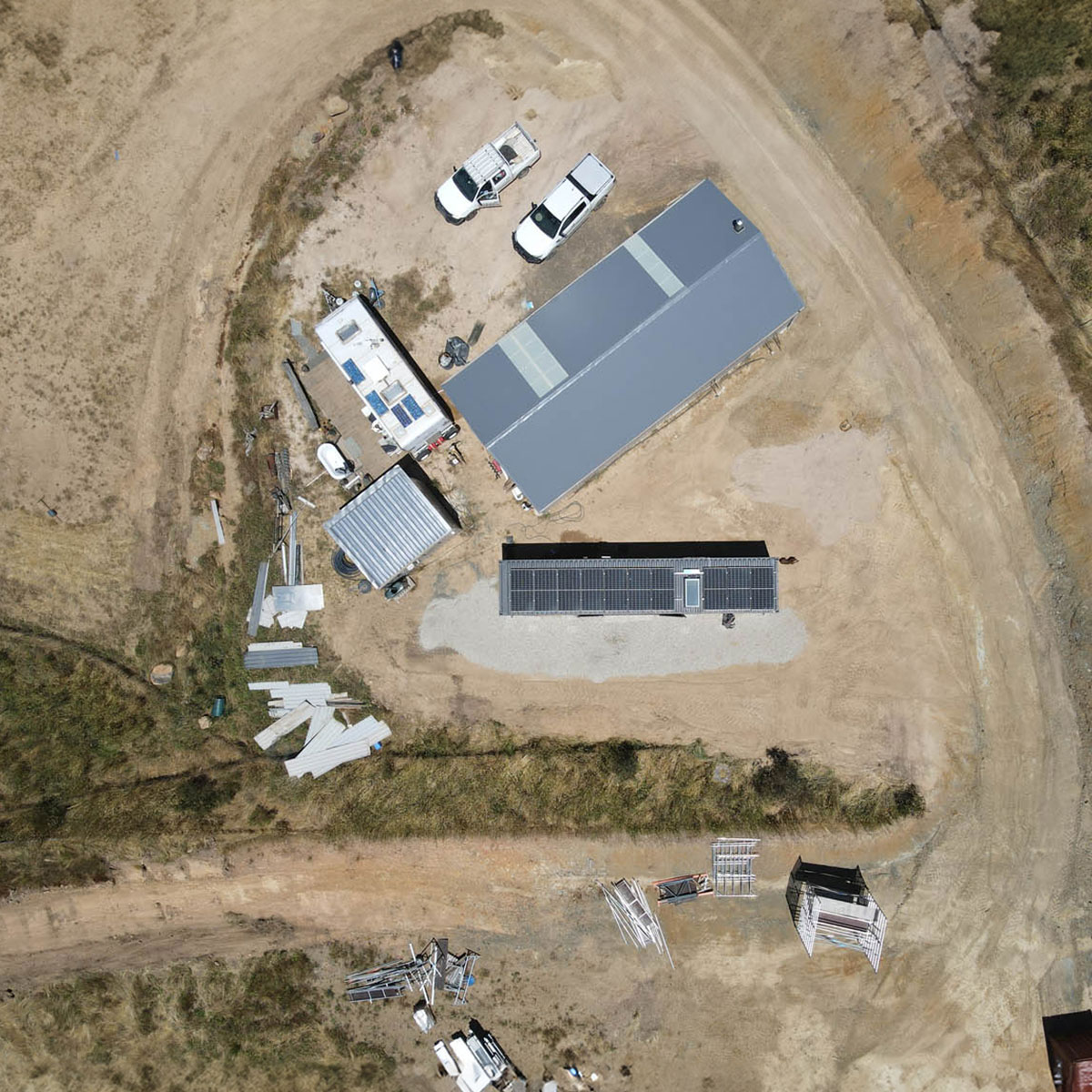
Living off the grid in a shipping container home is a dream for many, offering a sustainable and self-sufficient lifestyle. Shipping container homes, with their inherent strength and durability, make a compelling option for off-grid living, providing a sturdy and adaptable structure that can be customised to meet specific needs and preferences. Some key considerations for Off-Grid Container Homes are:
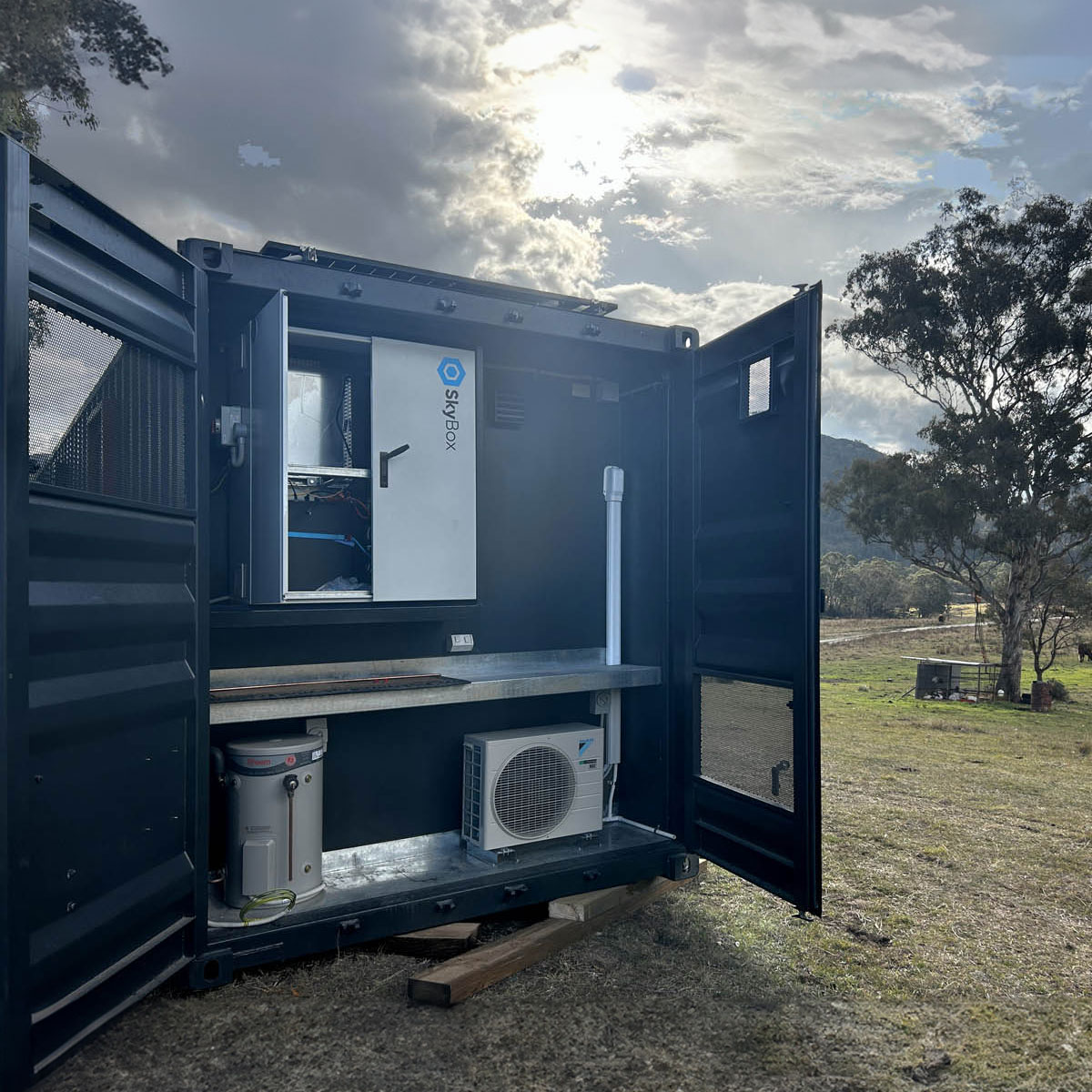
We work with Sky Energy to create a custom off-grid power solution that suits you best.
Sky Energy’s SkyBox is a battery and computer system that manages various energy inputs (solar, wind, generator) and combines them into one singular, reliable output of power, creating a grid-level supply of electricity (including three-phase power).
SkyBox comes in a range of sizes, from a small unit for off-grid ‘tiny-home’, medium units for family homes and businesses and an extensive container size range for large-scale applications.
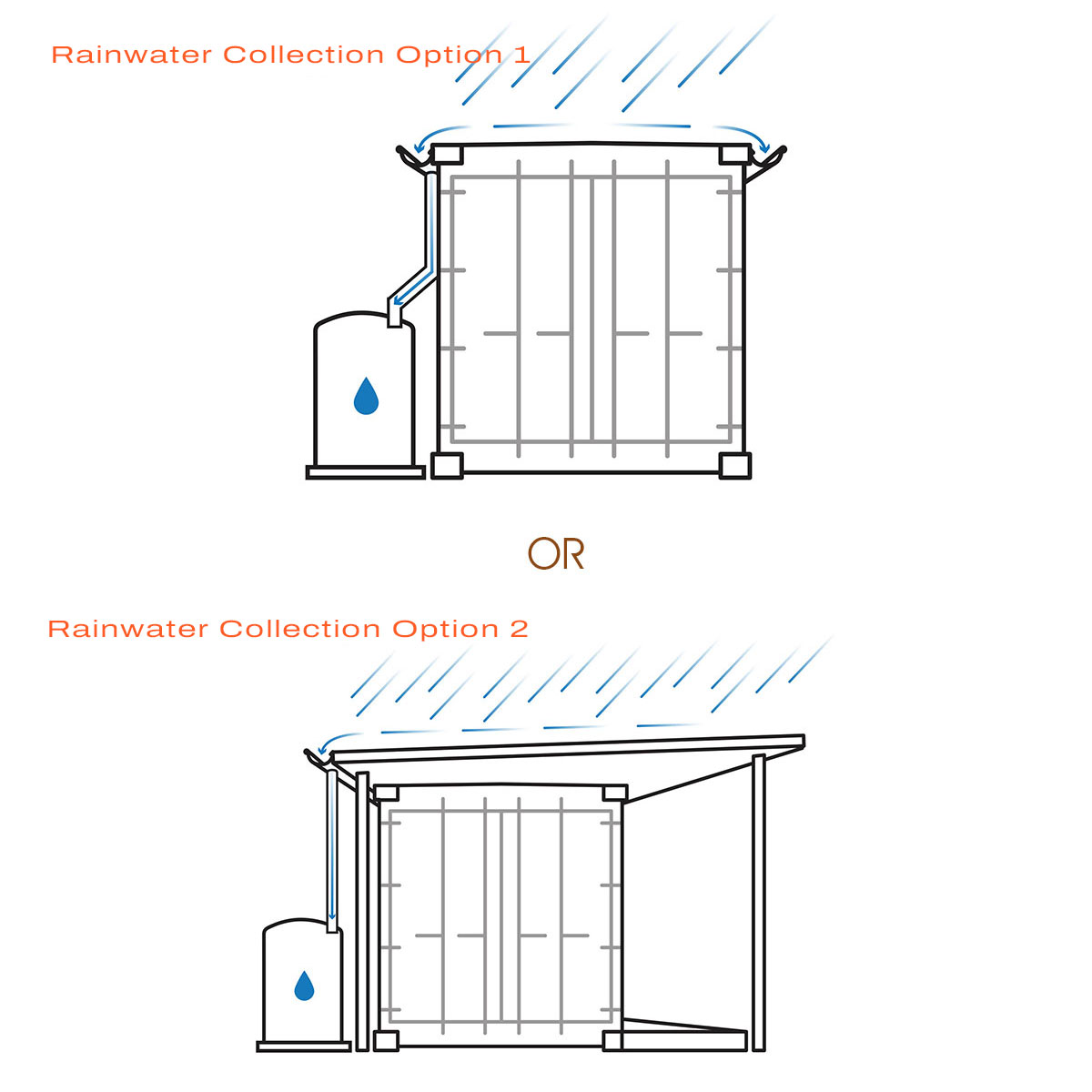
Shipping container roofs are inherently designed to drain water, and can be further optimised for rainwater harvesting for household consumptions.
The corrugated design of the roof creates natural channels for water to drain away. Though not as steep as traditional roofs, shipping container roofs have a subtle slope that helps direct water towards the long sides, which can then be captured by installing gutters along these edges. One alternative is to raise the slope of the container roof on one side (cut, raise and reweld), thus creating a fall onto the other side of the container for better water collection.
A roof-over is also a great alternative. Roof-overs add an extra layer of protection against the intense sun, heavy rain, and even hail. The additional airspace created by the roof-over acts as an insulation buffer, helping to regulate temperatures inside the container home, especially during hot summers. It provides a larger surface area for capturing rainwater, enhancing your water collection efforts whilst creating a covered outdoor area, perfect for entertaining or relaxing in a sheltered environment.
Overall, a roof-over is a valuable addition to a shipping container home, providing weather protection, thermal insulation, and additional sheltered space. By carefully considering design, materials, and construction, Sonic Steel can help you create a functional and aesthetically pleasing roof-over that enhances the comfort and sustainability of your container home.
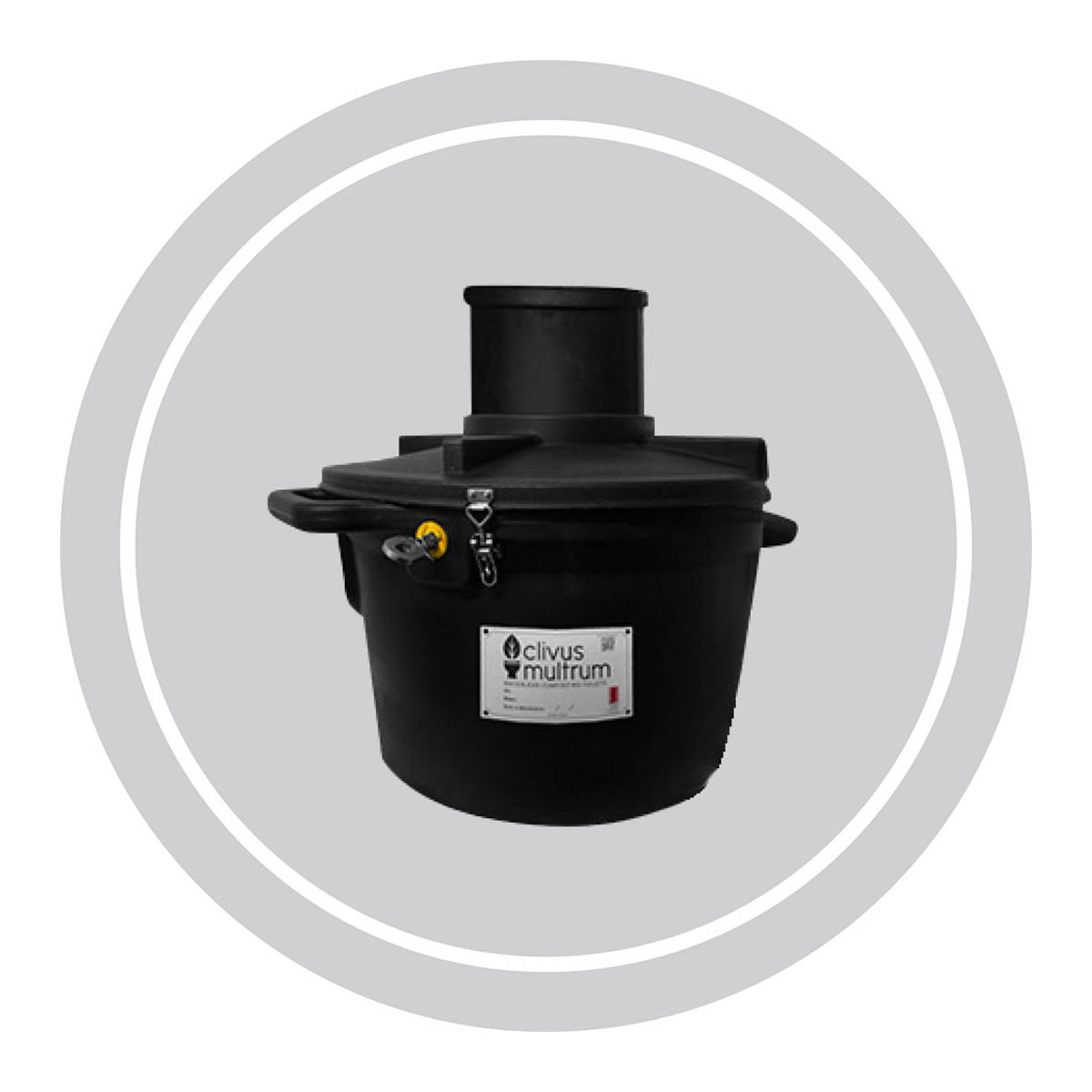
Composting toilet is an essential option for off-grid living. It operates completely waterless, conserving a significant amount of resources, which is crucial in remote areas where supplies might be limited. The toilet does not require any chemicals, making it an environmentally friendly option that aligns well with sustainable living practices. Its advanced ventilation system ensures there are no unpleasant odours, enhancing comfort in off-grid homes. The composting process produces nutrient-rich compost that can be used in non-edible plant gardens, promoting self-sufficiency. Additionally, the system is low-maintenance with few moving parts, making it easy to manage and ideal for locations without access to regular maintenance services. Reach out to our team to find out more about which toilet option is available and suitable for your needs.
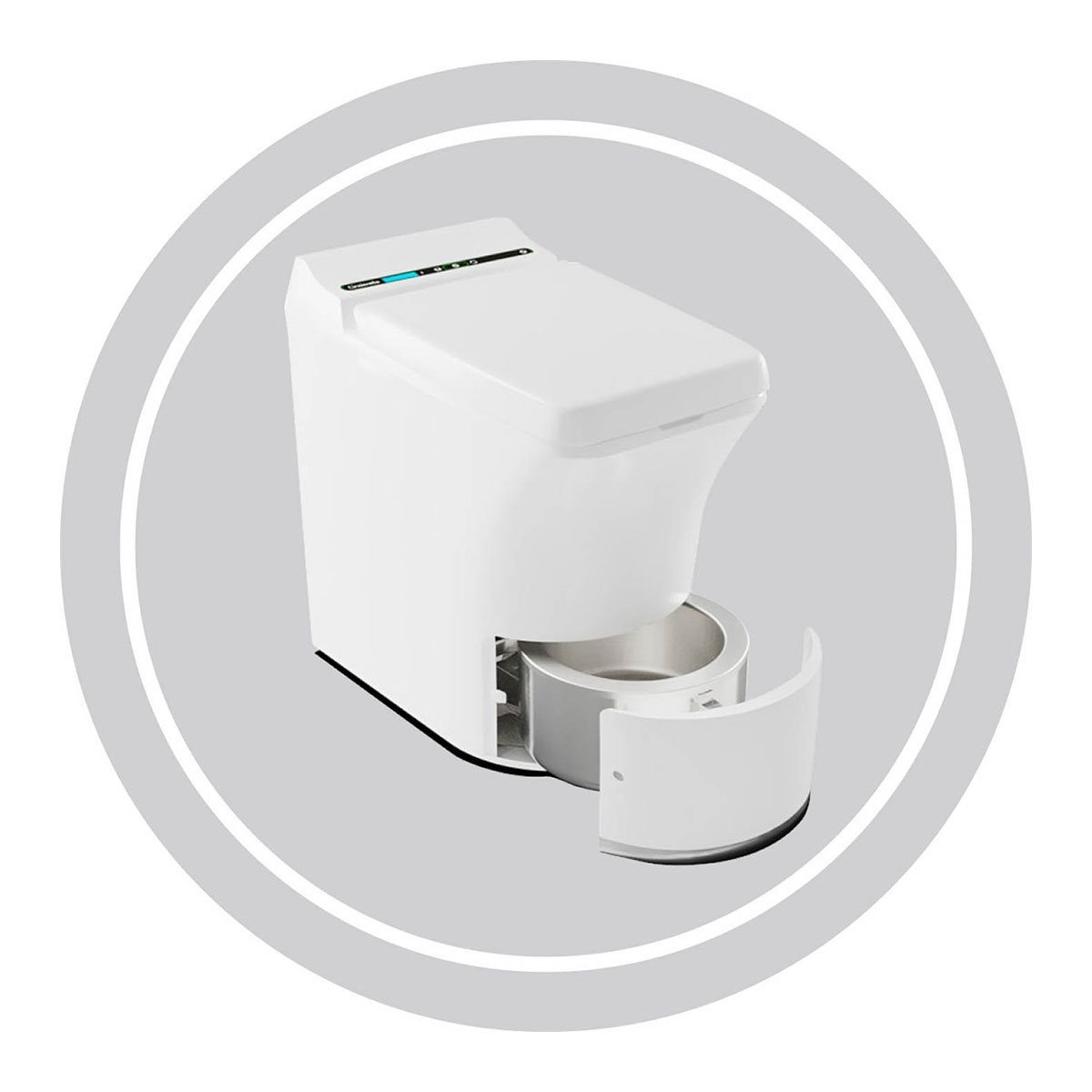
Cinderella’s incinerating toilets offer several benefits, making them an excellent choice for various settings. They do not require a water supply or sewage connections, which conserves water and simplifies installation, especially in remote or off-grid locations. These toilets can operate independently from the electric mains supply, providing flexibility in energy sources. The incineration process reduces waste to a small amount of sterile ash, minimising waste handling and eliminating the need for chemicals or bark. Additionally, the design is compact and childproof, ensuring safety and ease of use. The toilets are also odourless and hygienic, contributing to a clean and pleasant environment.
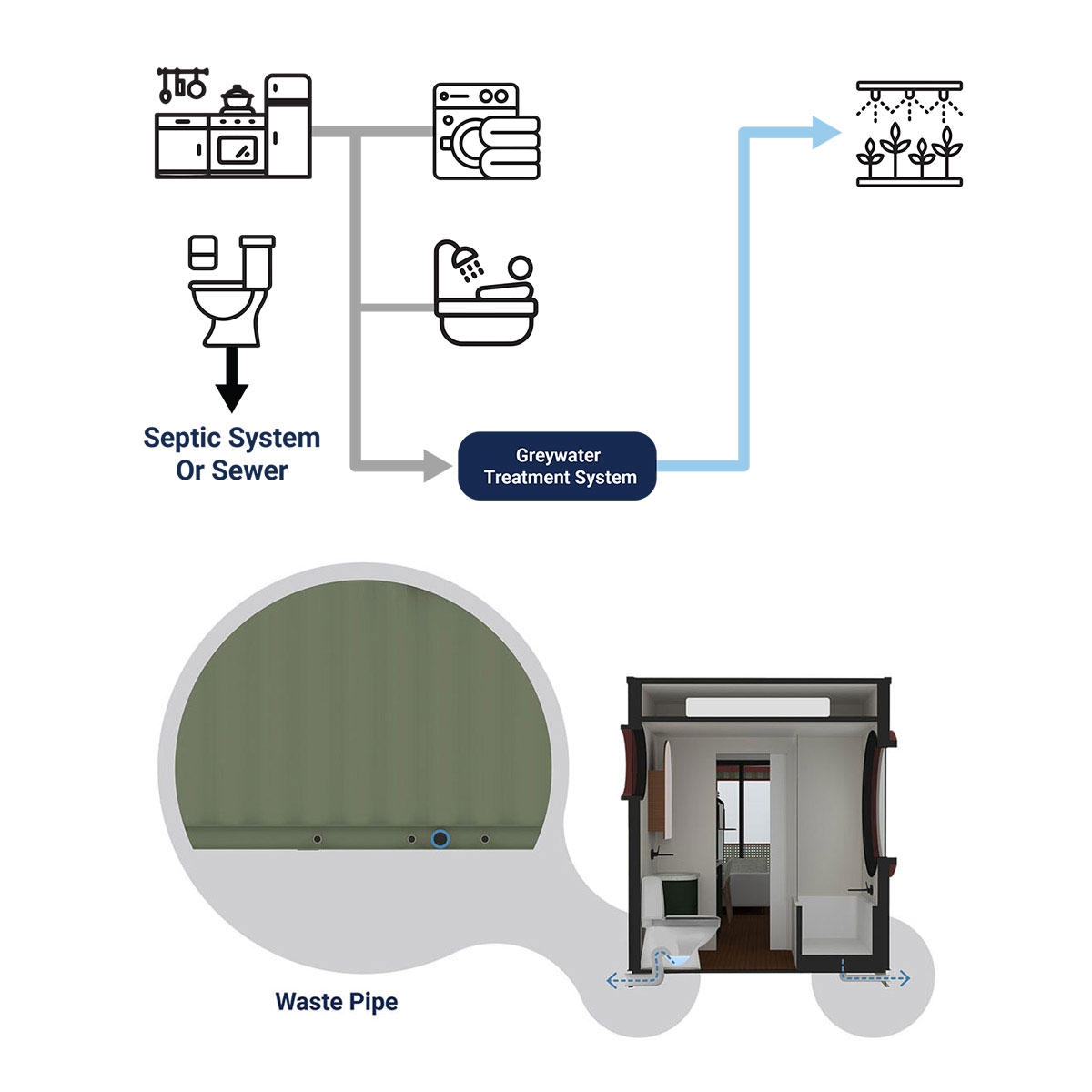
With Sonic Steel container homes, the waste pipe from flush toilet (blackwater) typically leads to either a septic tank or a sewer connection. If connected to a septic tank, waste is collected and treated on-site, whereas if connected to a sewer system, waste is transported through underground pipes to a municipal wastewater treatment facility.
With wastewater that comes from showers, bathtubs, washing machines, and sinks (greywater), a greywater treatment system would normally be required. There are various types of greywater treatment systems, including: gravity-fed systems, pumped systems, filtration systems, etc.
Sonic Steel container homes are normally pre-plumbed with waste pipes running in the sub-floor cavity and come out on the side of the sub-floor rail, ready to be connected to the waste system on-site.
Overall, off-grid wastewater treatment systems offer a sustainable and cost-effective way to conserve water and reduce environmental impact. If you are considering installing a wastewater treatment system, it is important to consult with a qualified professional to determine the best system for your needs and to ensure compliance with local regulations. Let us know if you would like further advice on where to start.
Shipping containers are inherently strong and are designed for cyclonic/ oceanic conditions. However, proper anchoring to the foundation and additional structural reinforcement will need to be engineered to comply with the building requirements.
Off-grid living offers a unique opportunity to achieve financial independence, reduce your environmental impact, enhance your self-sufficiency, and improve your overall well-being. While it requires careful planning, dedication, and resourcefulness, the rewards of living a more sustainable and fulfilling life can be truly transformative.
Off-grid living, while rewarding, comes with its own set of challenges:
Overall, while off-grid living can be incredibly rewarding, it’s important to be realistic about the challenges involved. Thorough
research, careful planning, and a willingness to adapt and learn are crucial for a successful off-grid experience